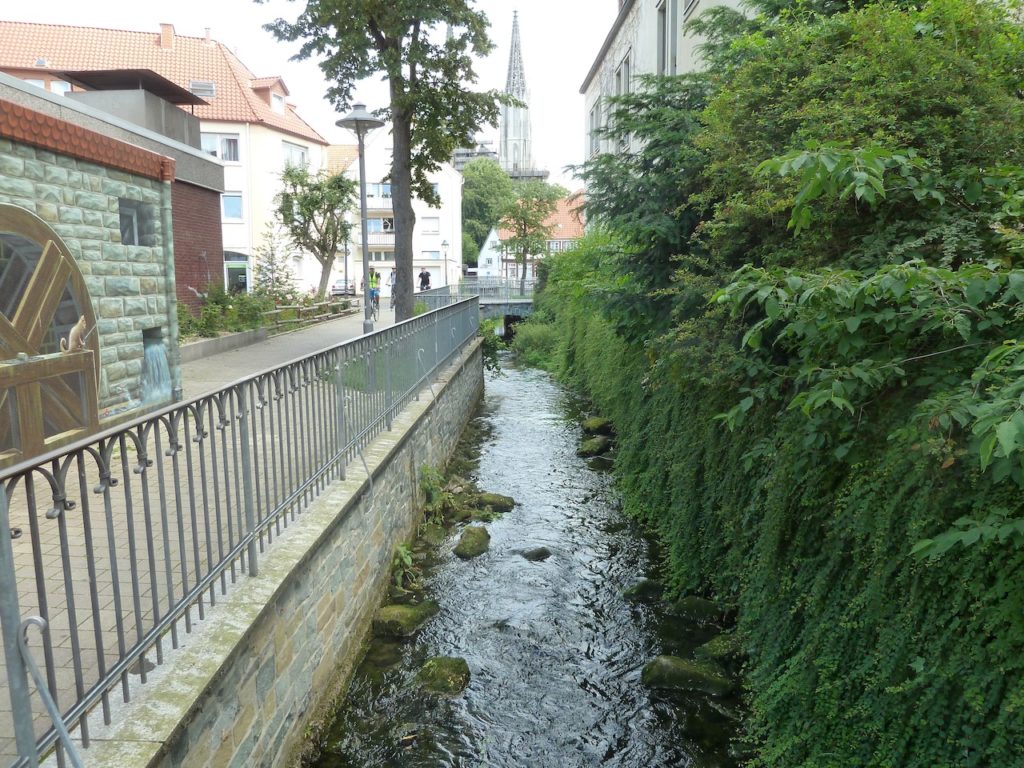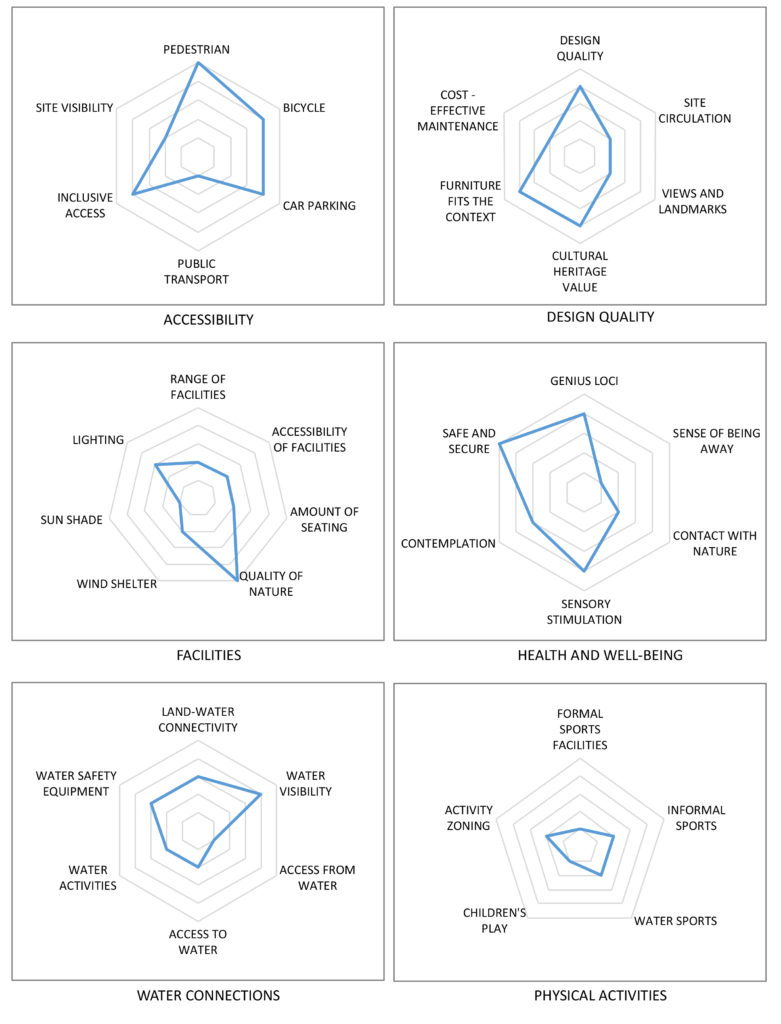
Architect
Büro Stelzig landscape ecology and planning office, City of Soest.
Type of Area
Stream with artificial banks
Ornamental water feature or fountain
Land/water interaction
Promenade
Bridges
Riprap
Built Environment Types
Moderately built
Moderately green
Scale of Impact
Place
Block
District/Neighbourhood
Intervention Scale (Spatial)
Linear development – multiple interventions
Project Types
Urban waterfront development
Public space regeneration
Habitat creation/restoration
Urban/ Rural
Urban core
Visibility and Openness
Fully enclosed
Fully contained view
From a smelly stream to a city asset
The Soestbach renaturalisation project in Soest, Germany has rediscovered an urban stream by changing its formerly technical character into an accessible linear public space. It was planned, developed and built-in different stages from 1992 by Büro Stelzig landscape ecology and planning office, initiated by the City of Soest. Previously, the Soestbach was a rather malodorous stream with hostile conditions for the ecology and a high flow velocity. It was a completely technical space while remaining an almost invisible element in the cityscape until the creation of an overall concept to expose it. The construction phases revealed the water flow of the stream and its connected springs. The Soestbach enters the city as a stream meandering through a meadow, mainly fed by more than twenty freshwater and saltwater springs during its course through the centre of Soest. However, it was historically converted into a sewage canal until it was partly redesigned. In the last few decades though, questions of flood security gained more importance – flooding was always a problem for the city as the stream flows through the medieval town centre.
The Soestbach saw a major decline in typical floodplain flora and fauna of the key indigenous habitats and an increase in common and alien floristic and faunistic species. It also saw a loss of migratory fish and an impoverishment of the amphibious fauna. The main planning objective was to turn the Soestbach from a eutrophied gutter into an attractive city waterscape. The aim was to utilise all possible spaces for water expansion under the urban planning conditions and to intensify the ecological and morphological diversity within the limited profile of the city stream. The development goal also aimed to achieve a near-natural urban stream course using the role model of a gravelly lowland stream, although the actual design is a deviation from the official classification of natural rivers. A precondition for the project was to raise the stream bed by almost two metres to ensure a varied flow behaviour as found locally.
By also revealing the feeding streams, they would add to the core flow and different flow velocities to the main stream. These actions changed the stream’s behaviour and the flow of its groundwater. It also reduced the bottom shear stresses and eliminated unpleasant smells. Furthermore, the palpable acoustic quality was enhanced by re-establishing the sound of splashing water through the addition of weirs and plant clusters placed to decrease the flow velocity. A combination of stone walls and metal railings forms the basic design material.
The quality of the meadow landscape was highlighted by re-establishing references to the local history of Soest, such as historical sculptures indicating flood heights and offering information about the stream landscape and its development. The planning focus was not directed towards aspects such as sports or events, because the visual and symbolic connection to this landscape is more important than direct access. The public space relationship was also improved through the redesign which not only made the water visible through balconies along the pedestrian routes and ramps or steps leading down to the stream; it furthermore introduced a new public space layer: a natural stream with artificial banks in the sense of a promenade passing through the city to be constantly experienced by its residents.
Perception and Meaning
Imageability
Accessibility
Place identity
Place attachment
Health and Wellbeing
Aesthetic experience
Better environmental perception
Place affordance
Restorativeness
Interaction with Water
Visual
Tactile – touching

Website of the project:
https://buero-stelzig.de/fileadmin/user_upload/2017_Soestbach_Projekt.pdf [In German but with many explanatory pictures]
Google map reference
This project performs in a variable way in most of the categories due to its location. The design improves overall inclusive accessibility. The establishment of a good design quality, which fits within the context and the cultural heritage of an urban river, has contributed a vital element that is valued in the cityscape.
As there are many facilities in the locality, the focus of facilities is more to the display of the new natural character of the stream and providing some lighting rather than providing many elements. The health and well-being potential varies quite a lot, since a sense of being away and contact with nature are not possible in the context.
The water connection is mainly visual with some exceptions as the river itself is not suitable for activities and access to and from the water is limited. Physical activity opportunities are fewer, due to the location and size of the site.
